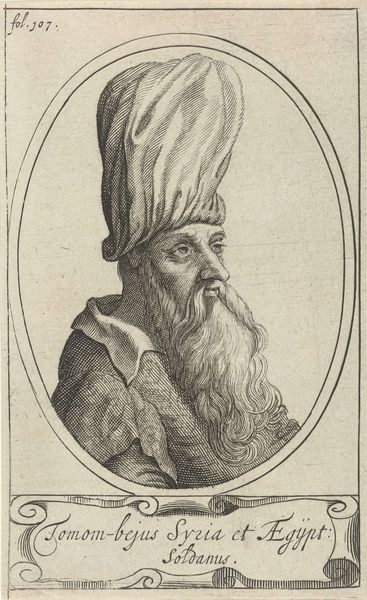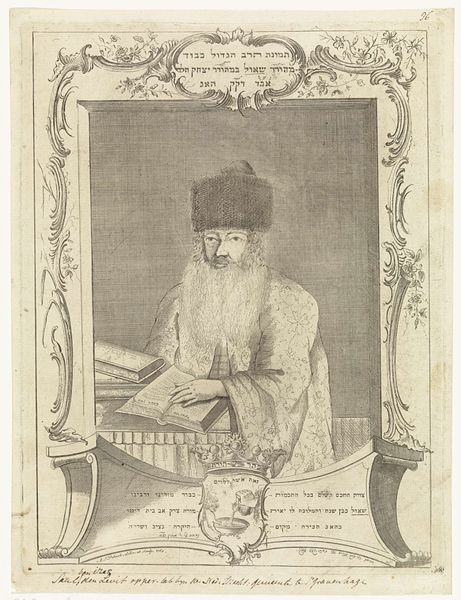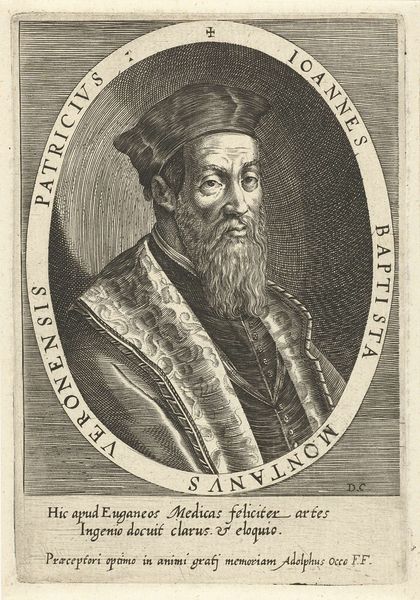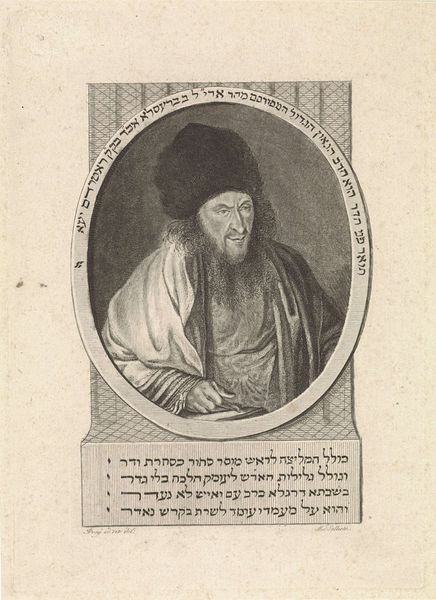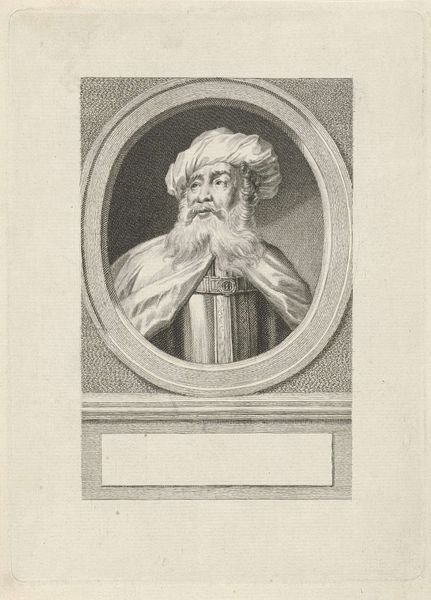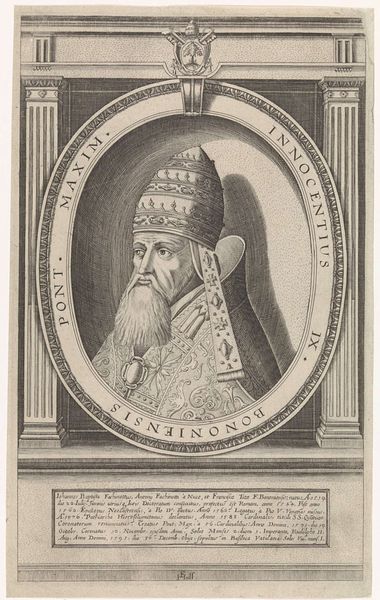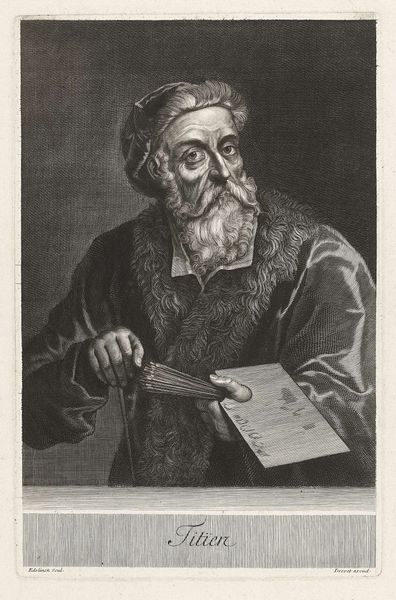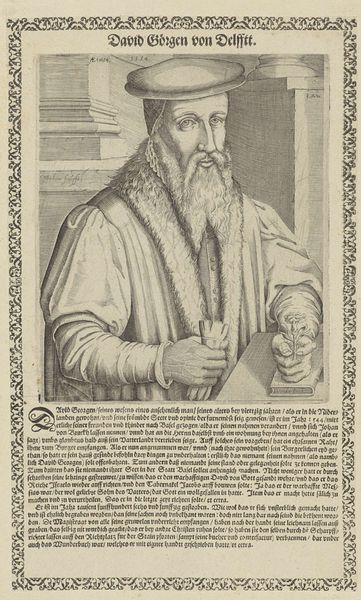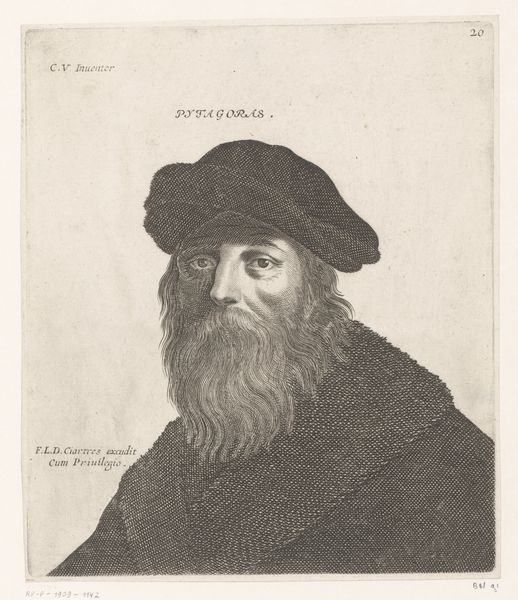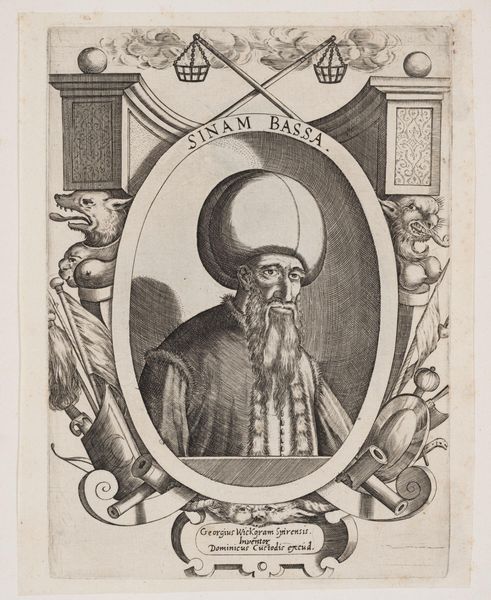
print, engraving
#
portrait
#
baroque
# print
#
old engraving style
#
figuration
#
line
#
history-painting
#
engraving
Dimensions: height 129 mm, width 83 mm
Copyright: Rijks Museum: Open Domain
Curator: Wenceslaus Hollar etched "Portret van John Tradescant de Oude" in 1656. The print is currently held here at the Rijksmuseum. Editor: My first thought? He looks like a kindly wizard. A wizard who probably knows a lot about very specific, obscure plants. There's something almost… mystical about the lines of this engraving. Curator: Tradescant, as in, John Tradescant the Elder, was a noted naturalist and collector. His cabinet of curiosities formed the basis of what later became the Ashmolean Museum at Oxford. This print, in its precise linework, speaks volumes about the 17th-century fascination with categorization and cataloging the natural world. Editor: Absolutely. There's a story etched in every line, isn’t there? You can almost smell the musty odor of preserved specimens. Look at the way Hollar uses lines to define Tradescant’s face—those etched wrinkles hint at countless hours spent in gardens and greenhouses. It’s a character study as much as a formal portrait. Curator: It’s vital to situate Tradescant’s work within the history of colonialism. Many of the ‘curiosities’ he collected were objects and specimens taken, sometimes violently, from colonized lands. He benefitted directly from the exploitation of both human beings and natural resources across the globe. This image therefore becomes part of a much larger and troubling historical narrative of extraction and ownership. Editor: That’s an important point. It makes me consider his gaze, too—he appears so contemplative, almost melancholic. Perhaps he carried the weight of those colonial origins, or perhaps, it’s the weariness of any passionate collector realizing that one can never truly possess what they love. And let’s not forget the playful details like the laurel frame, an elegant reminder of the status enjoyed by figures like Tradescant. Curator: That laurel frame underscores his perceived contribution to knowledge, framing him as a victor of discovery. Looking at the socio-political dynamics operating at that time, the laurel signifies the reinforcement of power and wealth. Editor: It’s funny how a simple engraving can open up so many layers of interpretation, isn't it? From kindly wizard to a symbol of complex histories. Curator: Exactly, engaging with these histories through the visual invites us to actively confront ethical concerns of collecting and remembering legacies.
Comments
No comments
Be the first to comment and join the conversation on the ultimate creative platform.
